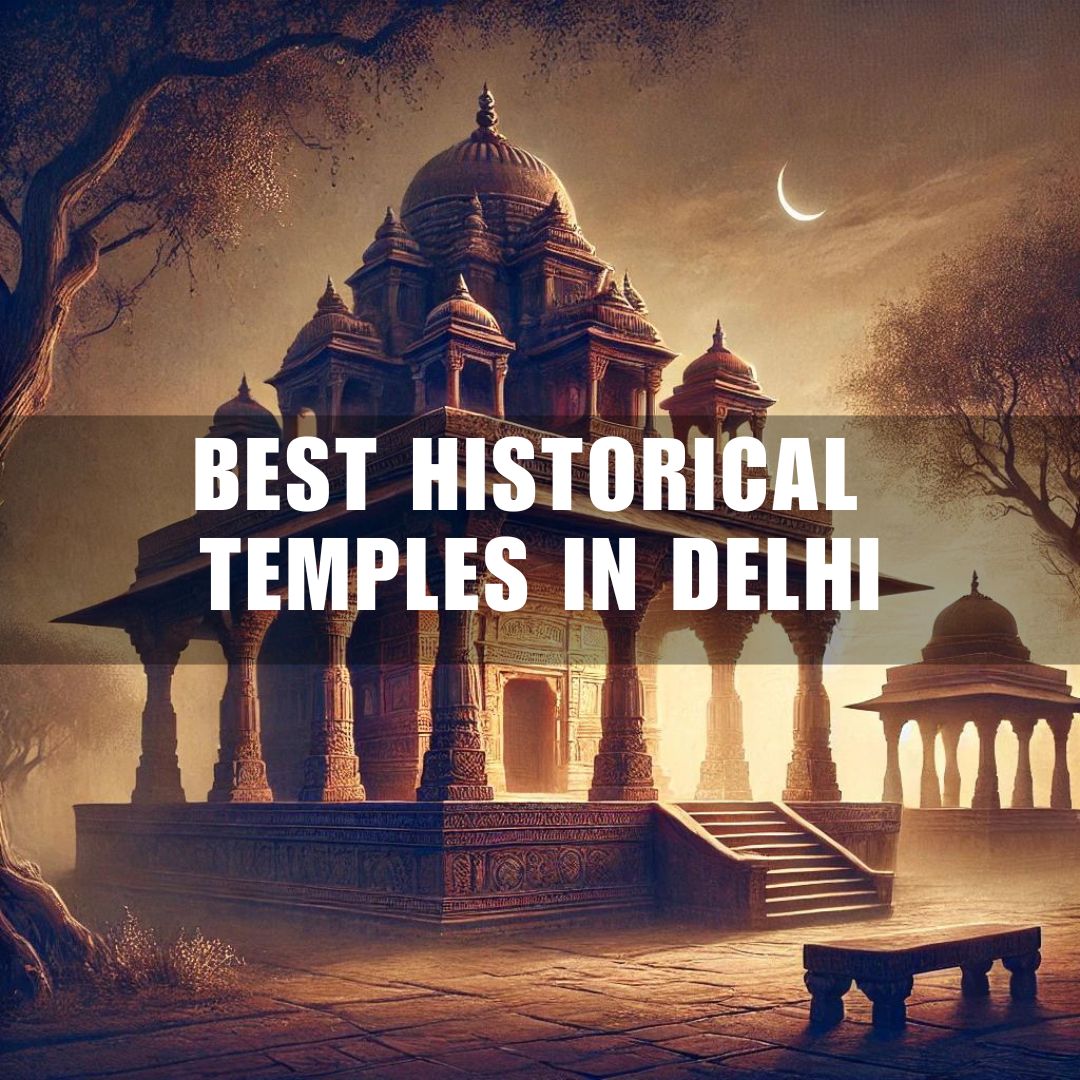Best Historical Temples in Delhi: Exploring the Spiritual and Architectural Wonders
Delhi, the capital of India, is a city rich in history and culture. While it’s known for its political significance and vibrant markets, the city is also home to numerous historical temples that are not only places of worship but also architectural marvels. These temples reflect the diverse religious heritage of the city, offering a glimpse into its spiritual and cultural past. Here’s a guide to some of the best historical temples in Delhi that you must visit.
Kalkaji Mandir
Location: Kalkaji, South Delhi
Established: Pre-12th Century (Exact origins unknown)
Kalkaji Mandir, also known as the Manokamna Siddha Peetha, is one of the oldest and most revered temples in Delhi, dedicated to Goddess Kali. The temple’s origins are shrouded in mystery, but it is believed to have been built during the ancient times, with renovations and additions made over centuries. The temple is especially popular during the Navratri festival, when thousands of devotees flock to seek the blessings of the goddess.
Historical Significance: Kalkaji Mandir is deeply rooted in Delhi’s spiritual history, and its significance has only grown over the centuries. The temple stands as a symbol of devotion and faith, attracting pilgrims from all over the country.
Birla Mandir (Lakshmi Narayan Temple)
Location: Mandir Marg, Near Connaught Place
Established: 1939
Birla Mandir, also known as Lakshmi Narayan Temple, was built by the industrialist B.R. Birla and is dedicated to Lord Vishnu and Goddess Lakshmi. The temple is known for its beautiful architecture, with intricate carvings and tall spires that are typical of North Indian temple design. The temple complex also houses several smaller shrines dedicated to various deities.
Historical Significance: Inaugurated by Mahatma Gandhi, who stipulated that the temple should be open to all castes, Birla Mandir is a symbol of inclusivity and unity in the city. The temple holds a special place in Delhi’s history as one of the first major temples built in the capital during the 20th century.
Gauri Shankar Temple
Location: Chandni Chowk, Old Delhi
Established: 18th Century
Gauri Shankar Temple, located in the bustling lanes of Chandni Chowk, is one of the oldest temples dedicated to Lord Shiva in Delhi. The temple houses an 800-year-old brown lingam, encased in a marble structure, which is believed to have been brought here by a devotee. The temple is also home to shrines of Goddess Parvati and Lord Ganesha, attracting devotees throughout the year.
Historical Significance: The temple is a spiritual oasis amidst the chaotic streets of Old Delhi, offering a glimpse into the city’s deep-rooted religious traditions. It stands as a testament to the city’s enduring devotion to Lord Shiva.
Hanuman Mandir, Connaught Place
Location: Baba Kharak Singh Marg, Connaught Place
Established: Ancient, exact date unknown
The Hanuman Mandir near Connaught Place is one of the five temples dating back to the Mahabharata period. Dedicated to Lord Hanuman, this temple is unique for its continuous chanting of the “Sri Ram, Jai Ram, Jai Jai Ram” mantra since 1964, which has earned it a place in the Guinness Book of World Records. The temple is a popular spot for devotees and is particularly crowded on Tuesdays and Saturdays.
Historical Significance: The Hanuman Mandir is not just a place of worship but also a historical site, reflecting the ancient roots of Hinduism in Delhi. It is one of the oldest temples in the city, with a deep connection to its spiritual past.
Yogmaya Temple
Location: Mehrauli
Established: Pre-Mahabharata Era (Exact date unknown)
Yogmaya Temple is believed to be one of the few surviving temples from the time of the Pandavas. Located near the Qutub Minar, this temple is dedicated to Goddess Yogmaya, the sister of Lord Krishna. The temple has been rebuilt and renovated several times over the centuries, but it continues to be an important spiritual center in Delhi.
Historical Significance: Yogmaya Temple holds immense historical and mythological significance, being closely associated with the epic Mahabharata. It is a reminder of Delhi’s ancient past and its connection to the great Indian epics.
Lotus Temple
Location: Bahapur, Kalkaji
Established: 1986
The Lotus Temple, officially known as the Bahá’í House of Worship, is one of the most iconic structures in Delhi. Shaped like a blooming lotus, this temple is open to people of all faiths, serving as a place of meditation and spiritual reflection. The structure is made of white marble and is surrounded by lush green gardens and nine reflecting pools, creating a serene atmosphere.
Historical Significance: The Lotus Temple is an architectural marvel and an important symbol of the Bahá’í faith, which emphasizes the unity of all religions and humanity. It is a modern addition to Delhi’s spiritual landscape but has quickly become one of the city’s most visited sites.
ISKCON Temple
Location: Hare Krishna Hill, East of Kailash
Established: 1998
The ISKCON Temple, also known as the Sri Sri Radha Parthasarathi Mandir, is a prominent Vaishnav temple dedicated to Lord Krishna and Radharani. The temple is known for its grand architecture, vibrant festivals, and the spiritual ambiance it offers. The temple complex includes a Vedic cultural center, a museum, and a vegetarian restaurant that serves delicious sattvic food.
Historical Significance: While relatively recent, the ISKCON Temple plays a crucial role in spreading the teachings of the Bhagavad Gita and promoting Krishna consciousness worldwide. The temple is an important spiritual hub for devotees and visitors alike, offering a deep dive into the teachings of Hinduism.
Delhi’s historical temples are not just places of worship; they are living monuments that narrate the city’s rich spiritual and cultural history. From ancient structures like the Yogmaya Temple to modern marvels like Akshardham, these temples offer a deep connection to the city’s past and a serene retreat from the fast-paced life of the capital. Visiting these temples is not only a spiritual journey but also a way to explore the diverse architectural styles and historical narratives that have shaped Delhi over the centuries.
Whether you’re a devotee, a history enthusiast, or a curious traveler, these temples are must-visit sites that showcase the soul of Delhi.




